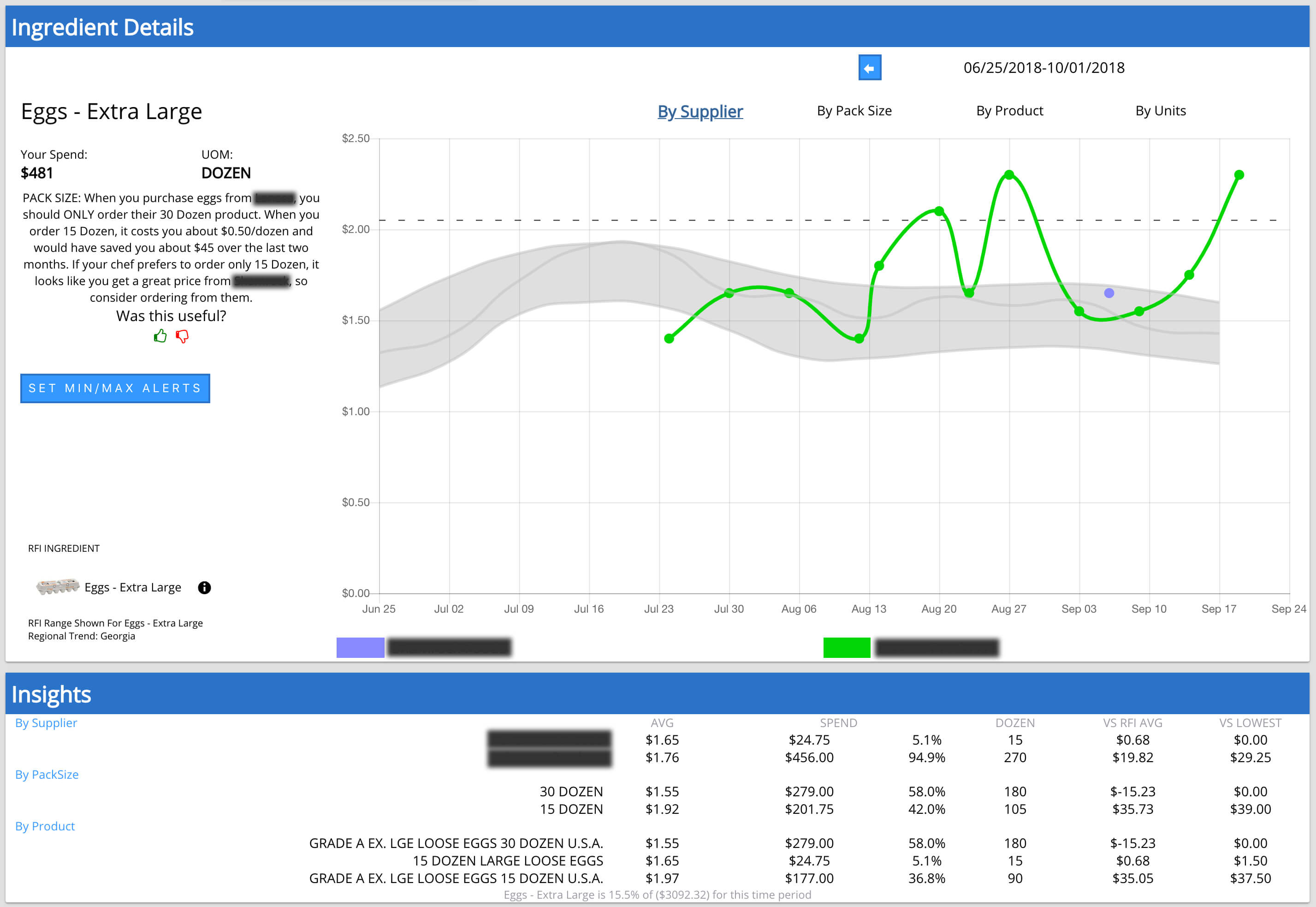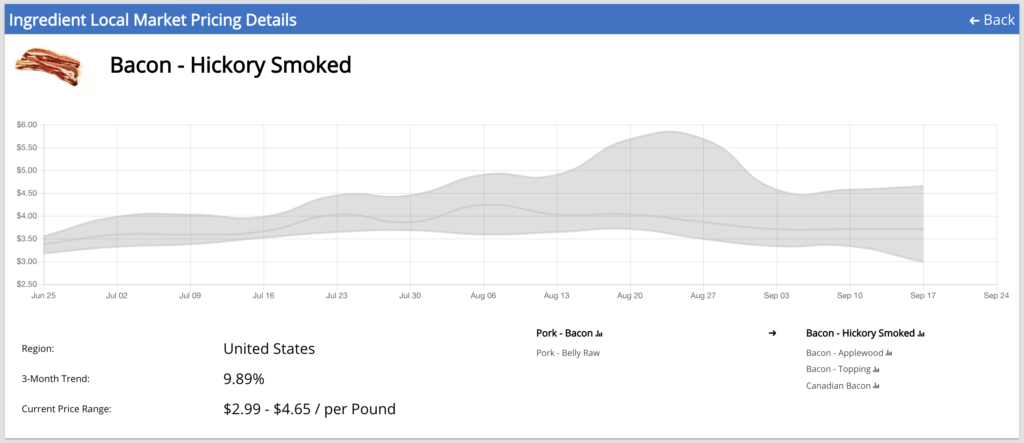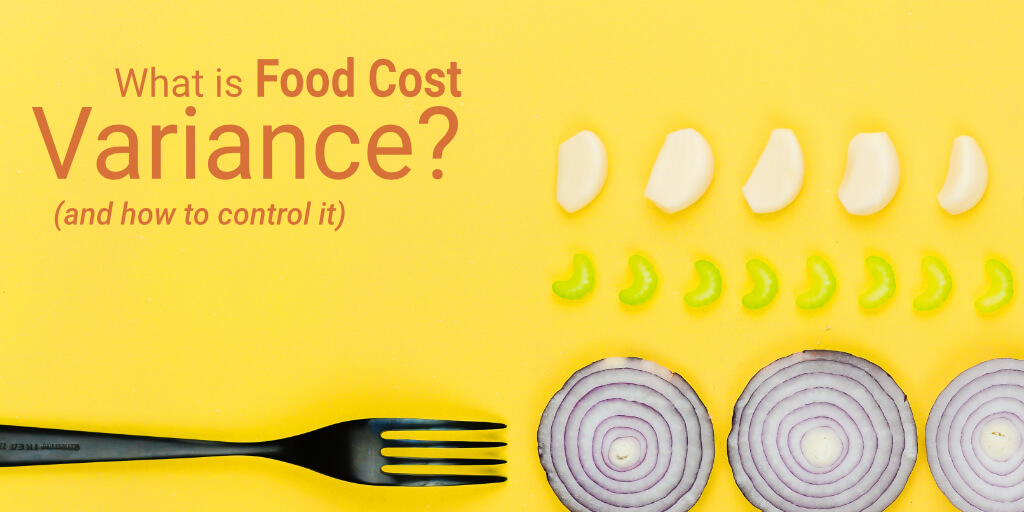How often do you check the prices of your ingredients?
Every delivery? Once a week? Once a month? You’re expecting your food cost to be around a very specific number. Your supplier didn’t mention any major changes in price, so why should you have to worry? You’re getting a good deal after all, right?
But prices are seasonal, and will often change. Small increments here and there. Sometimes they may go unnoticed. Sometimes you may catch them.
In an ideal world, your food cost would be exactly what you expect every single time. But unfortunately, that’s not how the supplier industry works.
So what is food cost variance and how can you keep it under control? Below we’ve outlined what food cost variance (as called cost variance) is and a few ways you can keep it under control.
What is Food Cost Variance?
If you’re like many of the restaurants we work with here at Orderly, you probably have invoices stacked high on your desk.
And if you’re like most of them, you probably only check food cost once a week or once a month. (Restaurant groups and franchises typically have a process laid out for food costing.)
So you start reviewing invoices and you notice that the pricing has changed significantly from what you would typically expect.
This difference in actual food cost versus your expected food cost (also called standard food cost), is your food cost variance.
Can Variance be Negative?
When calculating your variance, which we show you how to do below. Can variance be negative? Yes, food cost variance can be both negative and positive.
If your food cost variance is negative, that means your actual costs are higher than expected. A significantly negative food cost variance may mean that your purchasing process has underlying issues that need to be resolved. A negative variance can also cause issues with your ability to forecast profits accurately.
Likewise, if your variance is positive, it means your actual food costs are actually lower than expected.
Why Should You Measure Food Cost Variance?
So why even measure your variance? What does it accomplish?
Measuring your food cost variance is an essential task for all restaurants. It helps keep your ingredient pricing in check.
It also allows you to calculate a food cost percentage, create sales forecasts, and get a thorough understanding of your supplier and inventory efforts.
An efficient and profitable restaurant will keep their food cost variance low and can thorough explain why their numbers may deviate from a standard cost.
How to Calculate Cost Variance
The equation for calculating a restaurant’s food cost variance is:
- Food Cost Variance = (Actual price X Actual quantity) – (Standard Price X Standard quantity)
As you can see, you’ll take your actual cost minus standard cost to get a variance.
Actual Costs:
- Actual Price is what you currently pay for your chosen ingredient. This will vary based on market trends and seasonality.
- Actual Quantity is the current amount of the ingredient you’re buying.
Standard Costs:
Here comes the hard part. Standard cost relies on historical data that is gathered over a chosen period of time.
- Standard Price is the average price of a particular ingredient over a chosen period of time. Gathering historical price data allows you to smooth out any fluctuations in the market price for that ingredient.
- Standard Quantity is an estimate of the quantity you expect to buy. When calculating standard quantity, it’s important to factor in additional quantities for breakage.
Standard costs will have to be pulled from your invoice data, whether that’s in an Excel Sheet, your POS, or a restaurant management solution like Orderly.
 (we’ve blurred out supplier names in this example)
(we’ve blurred out supplier names in this example)
Orderly customers have access to our Restaurant Food Index, which lists price trends for all purchases. This will allow you to get a standard cost and quantity without having to sort through stacks of invoices.
How to Control Your Food Cost Variance
It’s important to note that your food cost variance should be tracked on a regular basis. Without additional data points, you cannot compare your progress to see if your variance is maintaining or getting better.
We recommend you track your cost variance for at least 6-12 months to get a better understanding of your average and to smooth out fluctuations that happen with seasonality and trends in the market.
But tracking every ingredient in your inventory is cumbersome… that’s a lot of calculations and data entry.
Instead of tracking every single ingredient, we recommend you pick 10 – 20 from your inventory. Ingredients that make the most impact on your bottom line. Whether that’s chicken breast, steak, or veal.
Once you’ve started tracking your food cost variance for each ingredient, there are a few ways to keep it under control:
- Work with your supplier: When was the last time you talked to your supplier about lowering your pricing? You should work with your supplier to create a true strategic partnership that will benefit you both. Work to improve your cost, yield, and utilization for each ingredient on your list, sometimes this may mean looking for a new supplier or product opportunity.
- Be consistent: It’s important that your chef and BOH stays consistent on compliance in regards to recipe preparation, production, plating, and presentation. This will help keep costs in check.
- Maintain an Inventory Process: What’s your inventory process? Are you able to accurately define stock levels? How do rotate food? FIFO? What about your inventory turnover rate or average days on hand?
- Track market prices: How do you know you’re getting a good deal on your ingredients. Your supplier may say they’re giving you a great deal, but it’s important to check market pricing. What are other restaurants in your area paying?
Conclusion
We’re not going lie, tracking food cost variance isn’t an easy job. It takes a lot of patience, data entry, and calculations.
But tracking your variance is important. It gives you a better understanding of exactly how you’re doing. It helps you to calculate a food cost percentage, create sales forecasts, and get a better understanding of your procurement efforts.
Luckily, there are tools that make this process easier.
 Here at Orderly, we do just that. Although we don’t give you a food cost variance, we do give you a cost of goods sold, ingredient pricing, and food usage. With Orderly, you’re able to quickly see how much you’re spending on ingredients so you can make adjustments if needed. You no longer have to enter data or calculation into endless Excel sheets. We grab line item details from your invoices and do all the work for you.
Here at Orderly, we do just that. Although we don’t give you a food cost variance, we do give you a cost of goods sold, ingredient pricing, and food usage. With Orderly, you’re able to quickly see how much you’re spending on ingredients so you can make adjustments if needed. You no longer have to enter data or calculation into endless Excel sheets. We grab line item details from your invoices and do all the work for you.
We help restaurants save more than 20 management hours every month. Click here to schedule a demo of Orderly and see it in action.
